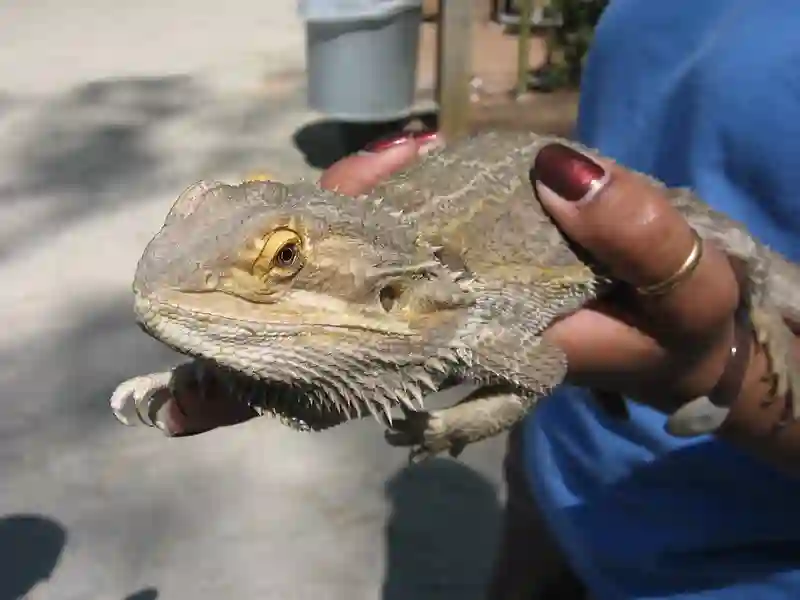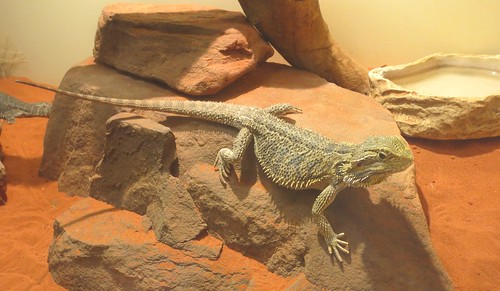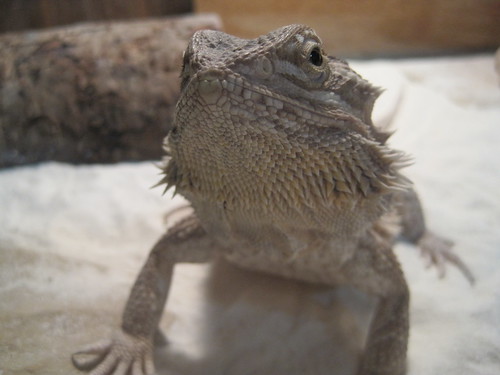Are you looking for a way to make your beloved Bearded Dragon more sociable and less shy? Do you want to train your reptile friend to come to you when you call? If so, you’re in the right place! As a professional Reptile Health Expert and an avid Bearded Dragon lover, I understand the importance of creating a strong bond between you and your pet.
All too often, Bearded Dragons can be shy and timid, making it difficult to interact with them. But with the right guidance and training, you can teach your Bearded Dragon to come to you when you call.
In this guide, I’ll provide you with all the tips and tricks you need to know to transform your shy Bearded Dragon into a sociable and trusting companion. So keep reading to learn how to turn your reptile friend into a sociable, loving pet.
Basic Training Techniques
Once your bearded dragon is comfortable in their habitat and with being handled, you can begin basic training techniques to encourage them to come to you. These techniques involve using positive reinforcement to teach your bearded dragon that coming to you is a positive experience.
Hand-feeding your bearded dragon
Hand-feeding your bearded dragon is one of the simplest and most effective ways to encourage them to come to you. Start by offering small pieces of food from your hand while gently calling their name. As they become more comfortable, gradually increase the distance between yourself and the food until they are coming all the way over to you for a treat.
Using a target stick or lure to encourage movement towards you
A target stick or lure can also be used as a tool for training your bearded dragon. This involves using a stick or object that they are attracted to, such as a worm or cricket, and gradually moving it closer and closer towards you until they associate coming towards you with getting the object. Over time, you can phase out the object and train them solely on responding to your call.
Rewarding with treats or praise
Rewarding your bearded dragon with treats or praise each time they successfully come over when called will reinforce this behavior. Be sure to use small treats, such as small pieces of fruit, vegetables, or insects so as not to overfeed them. Consistency is key here; make sure that every time they come over when called they receive positive reinforcement.
Advanced Training Techniques
Teaching your bearded dragon to recognize its name
One of the most useful advanced training techniques is teaching your bearded dragon to recognize its name. It’s a great way to enhance communication and improve the bond between you and your pet.
The best way to teach this is by repetition. Start saying your bearded dragon’s name every time you approach them or interact with them.
After a while, they will start associating their name with you and paying attention when they hear it. This technique requires patience, consistency, and repetition.
Incorporating clicker training into your routine
Clicker training is another advanced technique that works wonders for many pets, including bearded dragons. Clicker training involves using a small plastic device that makes a clicking sound when pressed as positive reinforcement during training sessions.
By using the clicker consistently with desirable behavior, you can condition your bearded dragon to understand that the clicking sound means it did something good and will receive a treat or praise as a reward.
Training recall commands using positive reinforcement techniques
Recall command is an essential skill in any pet’s training process, including bearded dragons. It helps keep them safe from harm and improves communication between you and your pet. To train this command, start by calling out a phrase such as “come” or “here“.
When they come towards you, reward them with treats or praise immediately. Repeat this process frequently until they come reliably every time they hear the command.
These advanced techniques require extra effort but are highly effective in improving communication between you and your pet while strengthening your bond further. Incorporate these techniques slowly into your routine while being patient during the learning process.
It’s important always to remember that each lizard has its individual personality which may influence how quickly it learns particular behaviors but persistence and consistency will help you achieve success.
Troubleshooting Common Problems
Lack of Interest in Food or Treats During Training Sessions
One common problem that can arise during training is when your bearded dragon appears disinterested in the food or treats you are using as a reward.
This can occur for a variety of reasons, such as if your pet is not hungry, feeling ill, or simply not interested in the particular type of food or treat you are offering.
If this happens, try using a different type of food or treat to see if that captures their interest. It’s also important to ensure your bearded dragon is healthy and has a good appetite before beginning training.
Avoiding Interaction with Humans
If your bearded dragon seems to be avoiding interaction with humans during training sessions, it could be due to inadequate socialization. Be sure to start socializing your pet from an early age and gradually introduce them to different people and environments.
If they still seem fearful or hesitant around humans, try approaching them slowly and calmly while offering treats to help build positive associations. You can also try sitting near their enclosure regularly and talking softly to them so they become used to the sound of your voice.
Aggressive Behavior Towards Humans
If your bearded dragon displays aggressive behavior towards humans during training sessions, it’s important to address this issue promptly.
Aggression can result from a number of factors including fear, territoriality, or improper handling. Never punish an aggressive bearded dragon as this will only escalate the situation further.
Instead, seek professional advice from an experienced veterinarian or reptile behaviorist who can help you identify the root cause of the aggression and offer guidance on how best to manage it through targeted training methods and environmental adjustments such as modifying their enclosure setup or feeding routine.
Conclusion
Summary of Key Points Covered in the Article
Throughout this article, we have discussed the importance of training your bearded dragon to come to you. We have examined the natural behavior and instincts of these fascinating creatures, as well as their body language and communication.
We have also looked at several basic and advanced training techniques that you can use to teach your bearded dragon to recognize their name and come when you call them.
Importance of Patience, Consistency, and Positive Reinforcement in Training
Training a bearded dragon requires a great deal of patience and consistency. It may take weeks or even months for your pet to learn how to come to you on command.
However, by using positive reinforcement techniques such as treats or praise, you can encourage your bearded dragon to learn quickly. It is important not to punish or scold your pet for failing to respond correctly during training sessions.
Instead, focus on rewarding good behavior with positive reinforcement. Remember that every bearded dragon is different, so some may require more time or a different approach when it comes to training.
Encouraging Readers To Share Their Own Experiences with Training Their Bearded Dragons
We hope that this article has been helpful in providing you with a foundation for properly training your bearded dragon. However, we also encourage readers who have successfully trained their own pets to share their experiences in the comments section below.
By sharing tips and tricks that have worked for you personally, other readers can benefit from your knowledge and experience. We believe that by working together as a community of passionate reptile lovers, we can continue learning how best to care for our beloved pets.



Leave a Reply